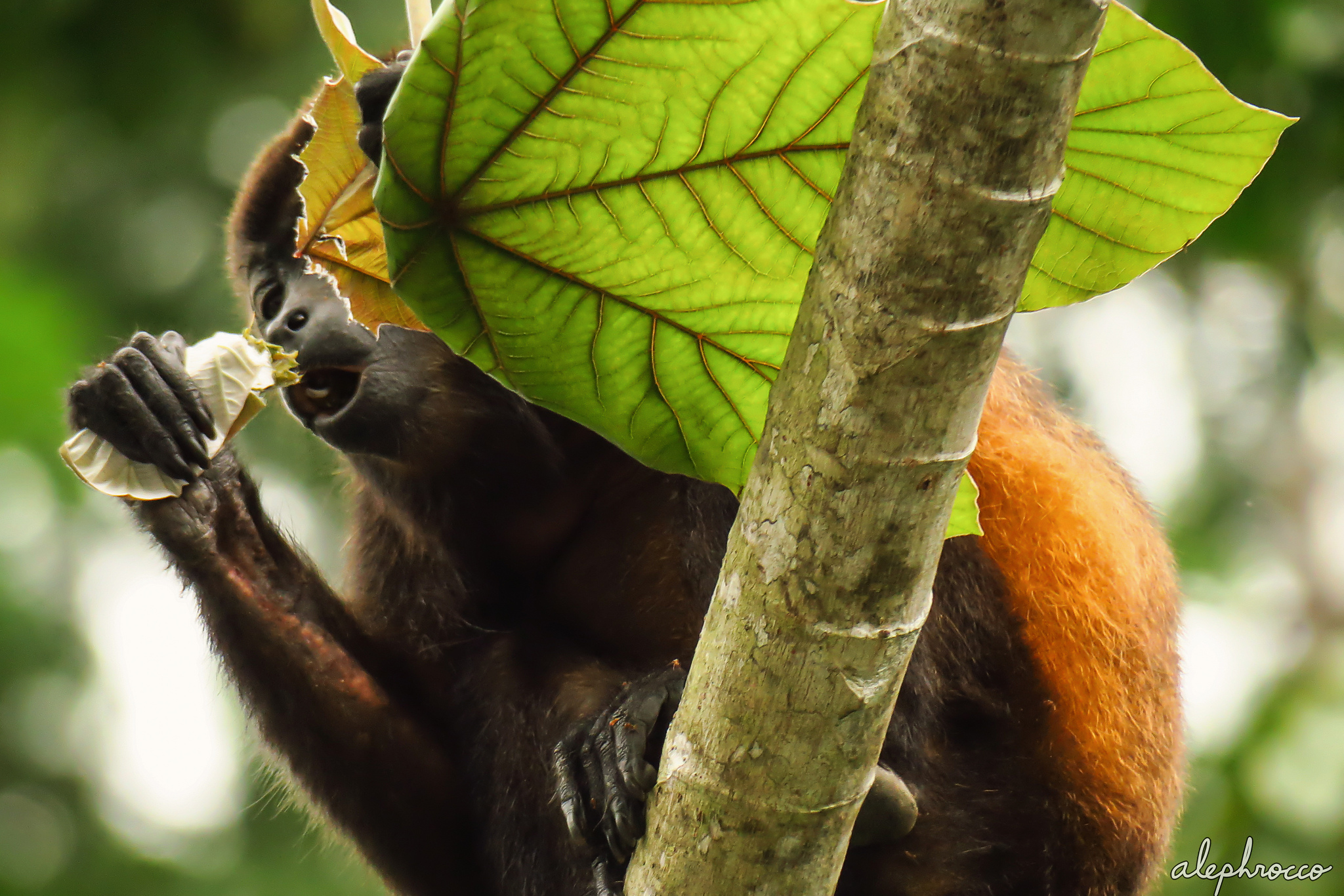
A mantled howler monkey (Allouatta palliata) takes a bite out of a delicious clump of cecropia leaves. Yes… they do have five fingers, the others are just hiding. On the monkey’s foot you can see tiny orange ants, possibly Azteca sp., not very happy about their fellow tree occupant. Azteca are famous for mutualistic associations with Cecropia trees. Similar to the domatia of some Acacia trees, the Cecropia trunk serves as the home for their ant mutualists. A mated queen will carve out a hole in a Cepropia sapling, closing the hole with plant tissue before laying eggs and eventually tending the larvae until workers emerge to patrol. The trees additionally provide nourishment for the ants through Müllerian bodies of glycogen (located on the petiole), while the ants supply the trees with nitrogen through their deposited waste and reside as pugnacious defenders of their host. Just as these ferocious Azteca would swarm and take down leafcutter ants and any other insect herbivores, they strive their best to overwhelm larger mammalian herbivores such as this howler monkey. Indeed, the howler monkey could only stay in one spot for so long before the ants became to numerous, and it would periodically change its position by strolling over to another part of the tree. While in Brazil I unwittingly rested with my backpack against a tree that was near a giant external colony of Azteca (~2.5 meters long), getting covered by thousands of them. Thankfully they don’t sting, only bite— small little nibbles.
All howler monkeys photographed after slight disturbance [2]
